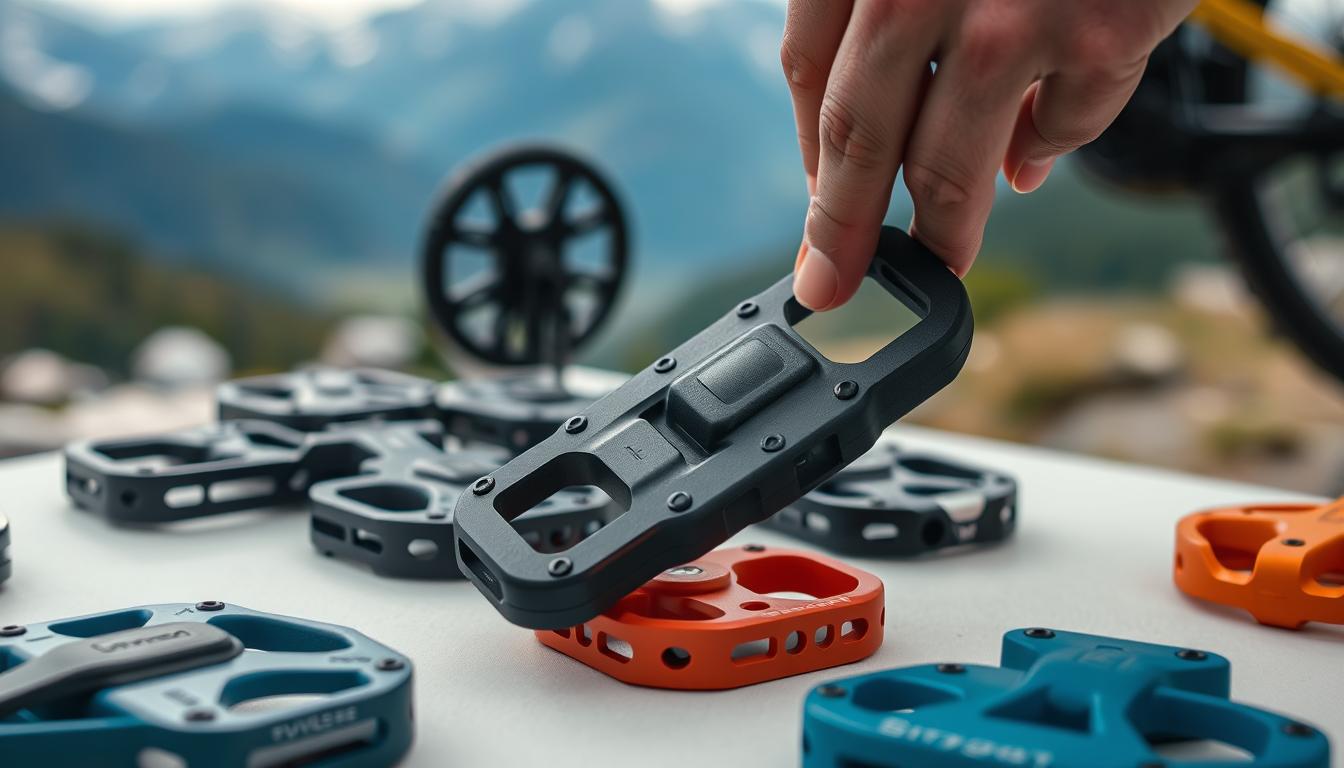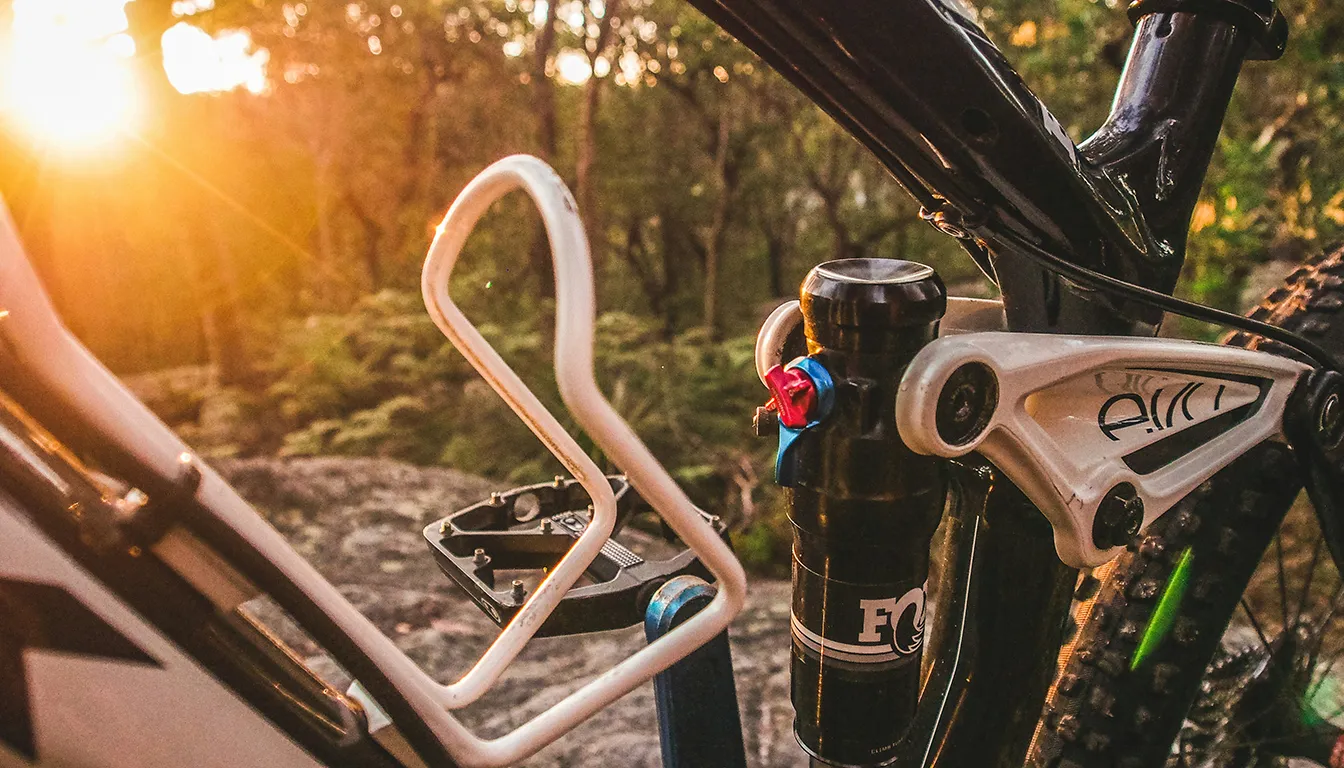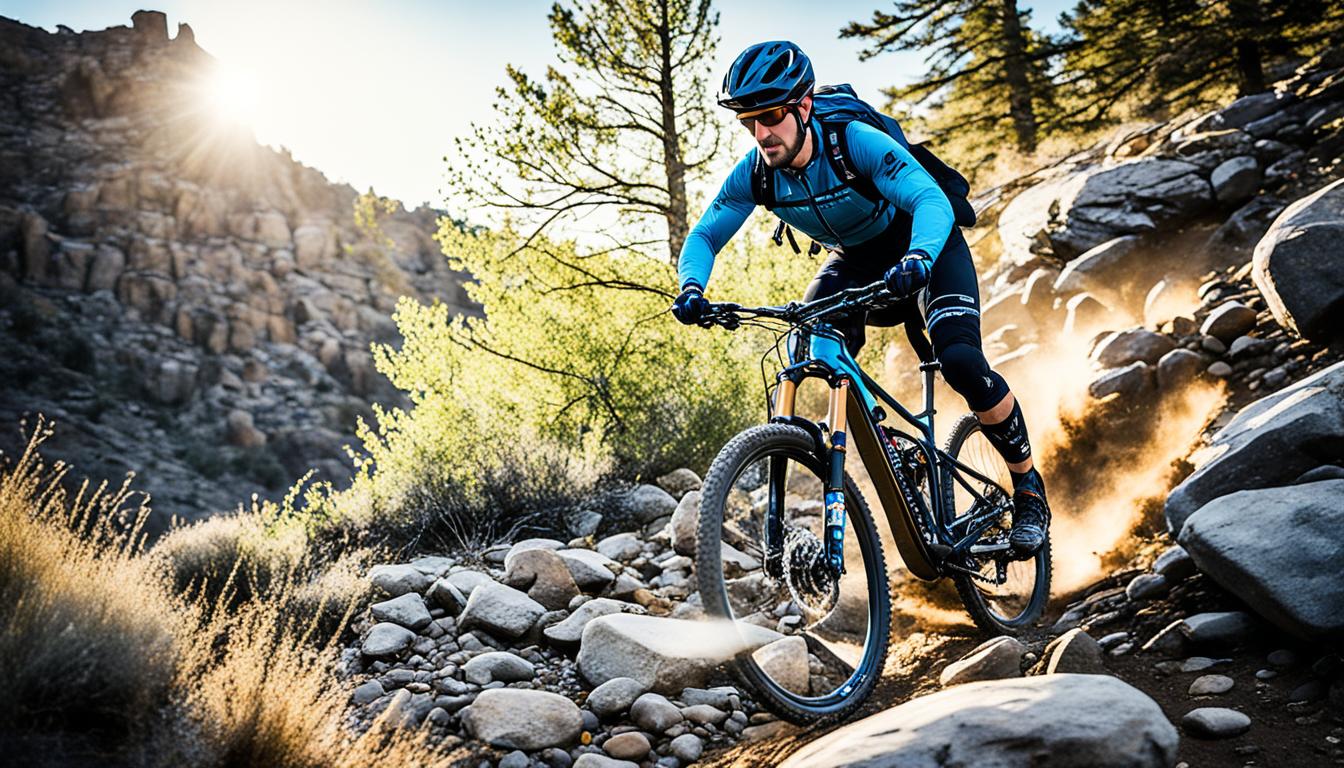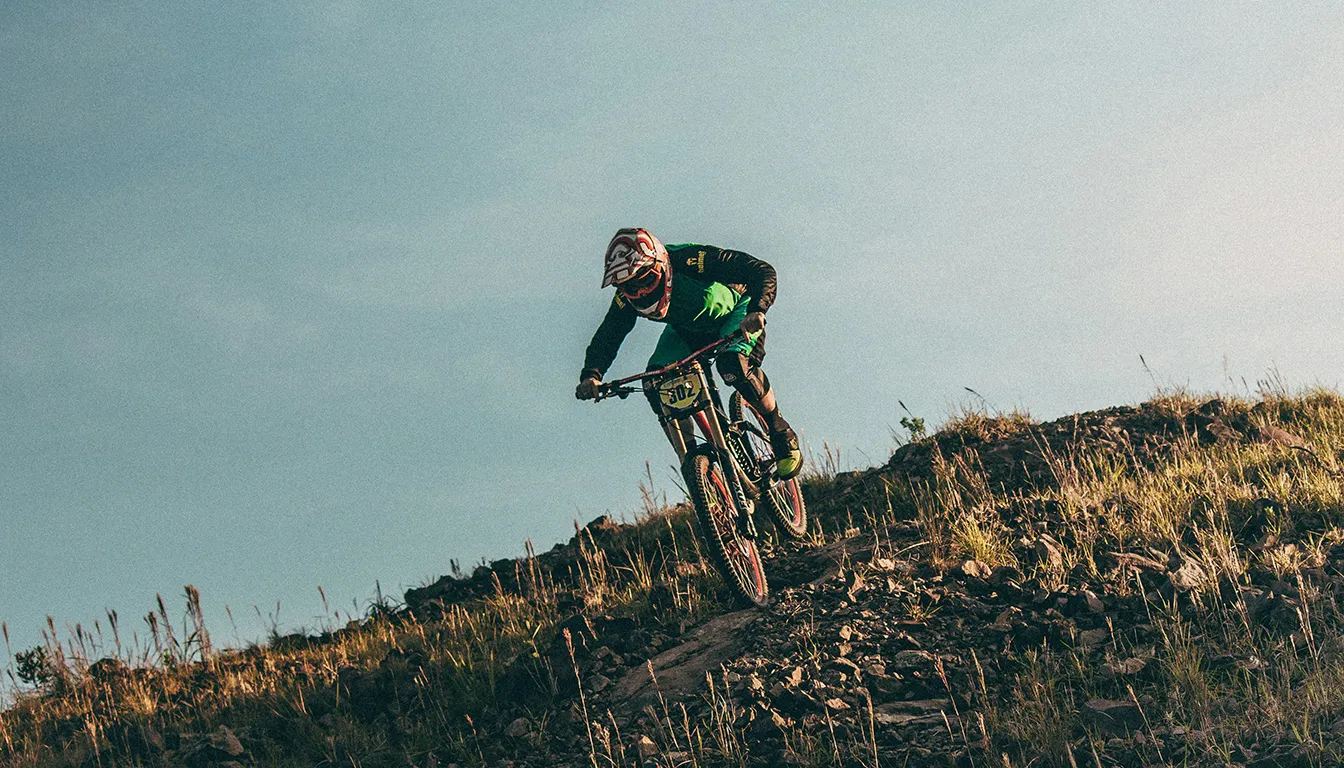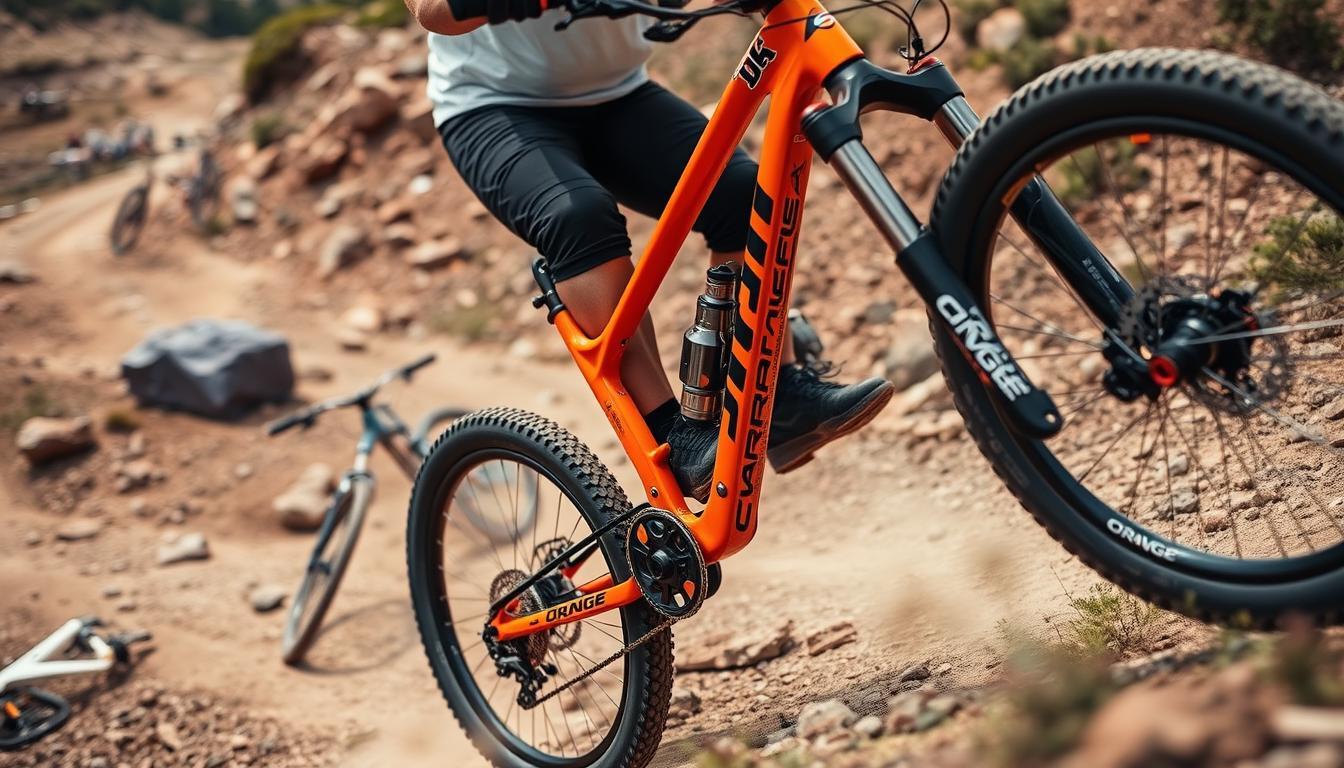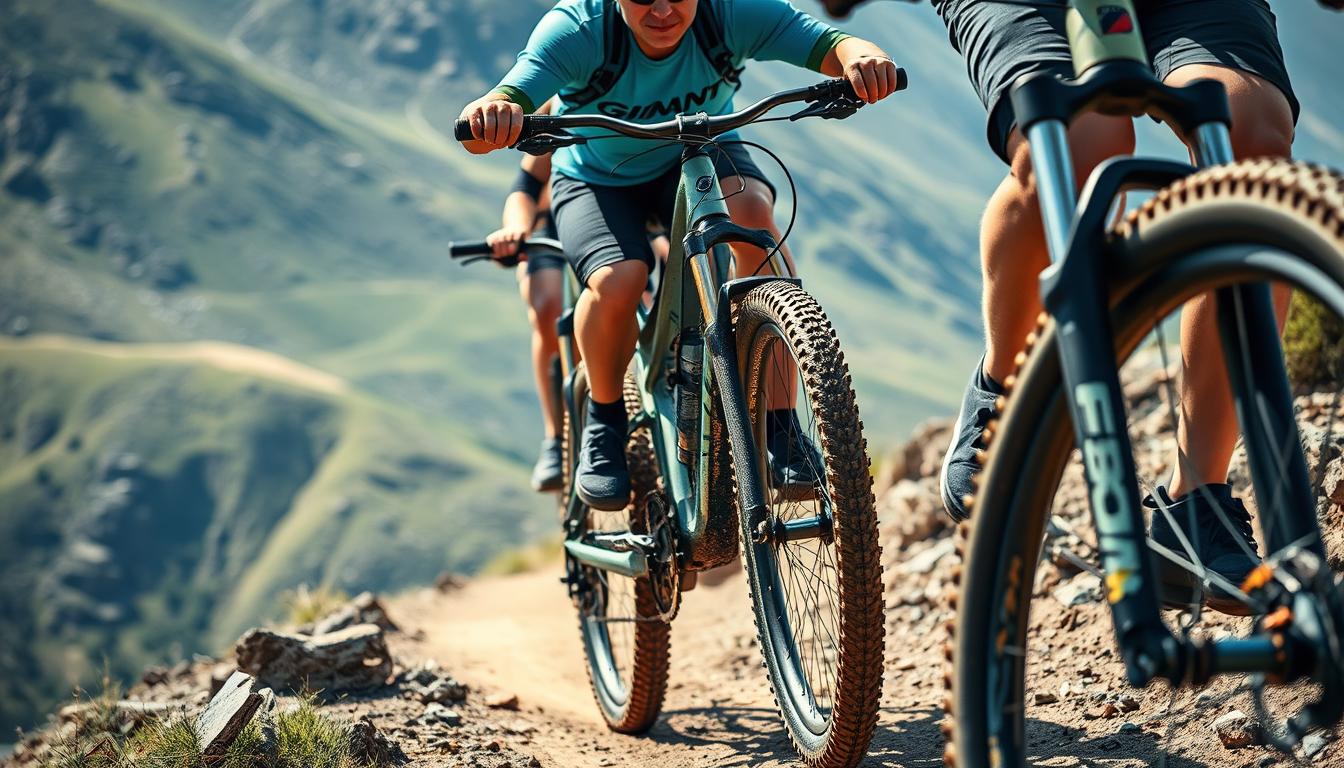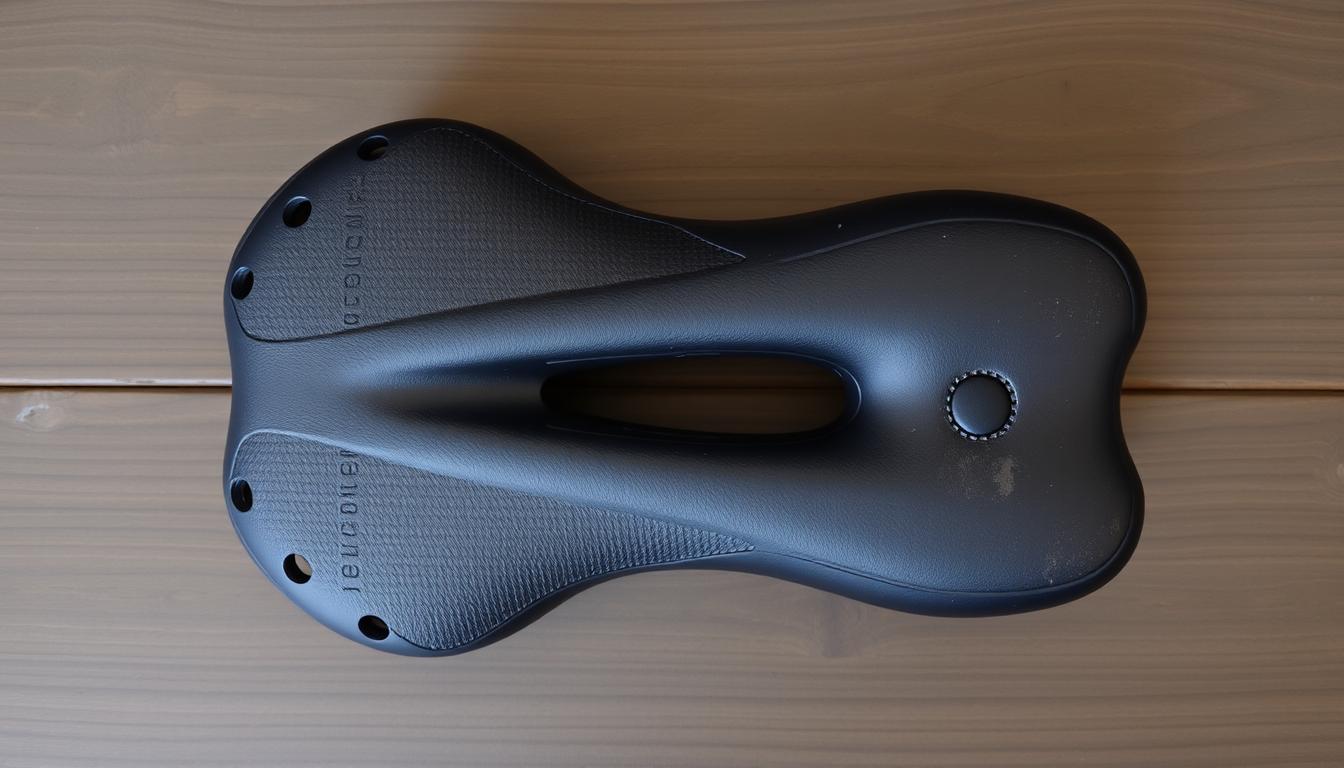Exploring mountain biking involves more than just the bike’s frame or wheels. The right bike pedals can enhance your ride. They offer comfort and control across different terrains. Think about what you like and how you ride before you choose.
Deciding between flat and clipless pedals is a big step. Each type has its pros. Flat pedals are cheaper and suit casual riders. Clipless pedals, however, provide better power transfer and grip, especially on tough tracks.
Choosing the right pedals requires knowing these differences. This knowledge helps match the pedals with your biking goals. For more tips on improving your biking skills, visit downhill biking for beginners.
Understanding the Basics of Mountain Bike Pedals
Every cyclist needs to grasp mountain bike pedals basic understanding. They connect you to your bike and affect safety, comfort, and how well you perform. There are two main pedal types: flat/platform pedals and clipless pedals. Flat pedals are great for those starting out. They let you move your feet freely which is handy for quick stops and foot adjustments.
Flat pedals are loved by newbies and those into tricks and jumps or riding in tricky spots. Clipless pedals, however, lock your feet to your bike. This bike pedal functionality boosts your power when you pedal. It helps with consistent foot placement, making your ride more efficient and controlled.
The OneUp Composite pedal, which costs about $55 to $60, is a good choice to start with. The Race Face Chester is another option with a similar price and performance. Some prefer flat pedals as they allow quick foot removal in slippery conditions. These pedals have 10-12 metal pins on each side to grip your shoes better.
This grip is key for control. As biking skills grow, knowing about flat and clipless pedals helps improve your rides. Check out this comprehensive guide for a deep dive into pedal choices.
Types of Mountain Bike Pedals
Choosing the right pedals for your mountain bike is important. It greatly improves your ride. There are different types of pedals to understand.
Flat pedals are easy to use and work in many situations. You can get on and off your bike quickly without problems. They offer strong grip, even on tough rides. The OneUp Components Composite Pedals are known for their great grip.
Clipless pedals connect you securely to your bike. They help you ride more efficiently. You can pull up on the pedals as you cycle. The Shimano XTR PD M9100 Race is light and good for many types of rides. Clipless pedals have special cleats that make them easy to use.
Hybrid pedals give you both options. You can use them with clipless or flat shoes. The Xpedo Ambix makes changing styles simple.
Choosing between flat, clipless, or hybrid pedals depends on how you ride. Picking the right pedal type enhances your biking fun.
Flat vs Clipless Mountain Bike Pedals
The decision to use flat pedals or clipless pedals changes the riding experience greatly. It’s important to compare the two types, as each has its benefits and drawbacks. Making the right choice is vital for bikers.
Flat pedals are safer because they prevent your foot from slipping off unexpectedly. This can reduce the chances of crashes. They offer a bigger area for your foot, which is great for stability when performing tricky moves. Also, they are easier to maintain compared to clipless pedals.
Clipless pedals are known for making your ride more efficient. They help riders keep up a good speed and use their energy better. This is because you can push down and pull up on the pedals. They also give better control when moving over obstacles. Their design helps avoid getting caught on things on the trail.
However, clipless pedals can be tricky in some situations. It may be hard to clip back in quickly after stopping. Mud can also make them less secure, which could lead to falls.
When looking at pedal pros and cons, it’s clear that flat pedals are the first choice for new riders. Experienced riders might switch between types to get the best of both worlds. Since new bikes often come without pedals, riders can choose the best fit for their style and preference.
How to Choose Flat Pedals
When picking flat pedals, you must consider features that affect how they perform and feel. These specs help you find the best pedals for your mountain bike adventures.
Flat Pedal Material
Flat pedals come in aluminium or nylon. Aluminium ones last longer and can handle tough landings, which makes them great for hard rides. Nylon pedals are cheaper but might break easier. Choosing between them means weighing up durability against price.
Flat Pedal Size
The pedal’s size is key for comfort and keeping your foot stable. Make sure the pedal is big enough for your foot but not too wide to hit things while you ride. A pedal that fits well helps you control the bike better on difficult paths.
Flat Pedal Pins
Pins on the pedals stop your feet from slipping off. Having more and longer pins means your foot grips better. Look for pedals where you can easily change the pins. Good pin design is crucial for keeping your feet in place, no matter the trail.
How to Choose Clipless Pedals
Choosing the right clipless pedals is key for a great cycling experience. It’s about knowing which clipless pedal features matter most. This knowledge can boost your performance and make riding more comfortable.
Clipless Pedal Features
Clipless pedals have features that make them effective. When picking these pedals, think about:
- Float: This is how much your foot can move side to side. The right amount of float can keep your knees from hurting.
- Adjustable spring tension: This controls how easily you clip in and out. If you’re new, a lower tension might be better for getting in and out more easily.
- Cleat design: You can pick between two-hole or three-hole designs. Your choice will depend on what kind of cycling you do and what shoes you have.
Clipless Pedal and Shoe Compatibility
The right pedal and shoe compatibility is crucial for clipless pedals to work well. Picking the right cleat type to fit your pedals improves your ride. When choosing, keep in mind:
- Use two-hole cleats for mountain biking or three-hole cleats for road cycling.
- Try to match your pedal and shoe brands to avoid problems. Different brands might not fit together well.
- Make sure your cycling shoes fit well so you don’t slip and so you can pedal more efficiently.
How to Choose the Best Bike Pedals Mountain Bike
To pick the right bike pedals, think about how you ride. Your choice between flat or clipless pedals depends on the terrain and conditions. Selecting pedals that suit your riding style will help improve your comfort and how well you ride.
Choosing Based on Riding Style
Here’s how to match your riding habits with the right pedals:
- Mountain Biking: Most mountain bikers, about 80%, prefer clipless pedals for better power and control on tough trails.
- Commuting: For city riders, 70% choose flat pedals. They make it easy to stop and go quickly in traffic.
- Road Cycling: Road cyclists mostly, up to 90%, go for clipless pedals. They aim for speed and efficiency on long rides.
Pedal Body Material Comparison
Pedals are made from different materials, affecting their weight, durability, and cost. Here’s a quick guide:
- Nylon: Great for casual riders, nylon pedals are light and cheap, often under $50.
- Aluminium: Durable and for serious bikers, aluminium pedals, like the Deity TMAC, cost more but last longer. They weigh around 350g.
Choosing the right pedals involves considering your riding style and material benefits. This will help enhance your biking. Always weigh up the material’s pros and cons for the best experience.
Exploring Hybrid Pedals
Hybrid pedals offer a versatile solution for cyclists. They come with both a clipless system and a flat platform. This lets riders switch between cycling shoes and everyday shoes with ease. This flexibility is perfect for those who enjoy different cycling styles or beginners eager to improve.
One big plus of hybrid pedals is how they fit different needs. Casual riders can switch to flat shoes for relaxed rides. While the clipless side boosts power for climbing and offers stability on tough rides.
However, hybrid pedals may not be as efficient as dedicated clipless or flat pedals. Riders often think about the trade-offs, like the challenge of flipping the pedal to the right side. With practice, though, getting used to clipping in and out can enhance your cycling.
For more thoughts on hybrid pedals, look at this discussion on hybrid flat and clipless
In brief, hybrid pedals are a great option for cyclists wanting both ease and performance. They’re an appealing choice for anyone keen to try different cycling adventures.
Key Features to Consider When Choosing Pedals
When looking for the best pedals for your mountain bike, it’s vital to know the key features. These features deeply affect how you ride. Here’s what to think about:
- Material: Pedals are made of metal or composite stuff. Metal ones are tougher. This makes them the preferred choice for 80% of mountain bikers due to their long-lasting nature.
- Dimensions: The size of the pedal is key for comfort and steadiness. Bigger platforms can boost grip and control significantly.
- Pin Configuration: The setup and quality of pins on flat pedals really impact grip. Metal pins are better at holding onto your shoes than plastic ones.
- Weight: Mountain bike pedals are usually about 50 grams heavier than those for road bikes. Think about this if you’re looking for performance and want to keep your bike light.
- Float and Tension: Clipless pedals let you move your feet sideways up to 6 degrees. This gives flexibility while staying connected. You can adjust the spring tension for easier or harder release.
Choosing the right bike pedals means thinking about how you ride, the landscape, and what feels good. Clipless pedals are great for more power and control on tough terrains. Flat pedals are easier to use and great for beginners. Your final choice should match your riding goals and what you like.
Conclusion
In conclusion, choosing the right bike pedals is essential for a better mountain biking experience. We’ve looked at flat and clipless pedals, each with their own benefits. Flat pedals are versatile and easy to use, ideal for mixed terrains and casual rides.
Clipless pedals, found in brands like Shimano, Crank Brothers, and Time, boost your pedalling efficiency. They give you more control and performance, especially on tough rides. When picking pedals for your mountain bike, think about how you ride, where you ride, and what you need from your pedals.
Your choice of pedals should match your cycling goals, be it commuting, touring, or trail riding. Explore and test various models to find the best fit for you. The right pedals don’t just improve how you perform but also increase your enjoyment on the bike.
By understanding your needs and making an informed choice, you can make your ride more rewarding and effective. Happy cycling!
FAQ
What are the main differences between flat and clipless pedals?
Flat pedals let you move your feet freely. They are easy for beginners to use. Clipless pedals secure your feet to improve power and reduce slipping during tough rides.
How do I determine the right pedal size for my bike?
Getting the right pedal size is key for comfort and control. Flat pedals should fit your foot size without hanging over. Clipless pedals must match your cycling shoes for the best cleat fit.
Are hybrid pedals suitable for all types of cycling?
Hybrid pedals mix the best of both worlds. They have a clipless side and a flat side. This makes them great for casual biking or if you’re new to clipless pedals. You can switch between styles as needed.
What materials are commonly used in bike pedals, and how do they affect performance?
Metal and composite are popular materials. Metal pedals last longer, making them perfect for tough conditions. Composites are lighter and cheaper. Your choice affects the pedal’s weight, grip, and how it performs.
How do I choose between flat and clipless pedals based on my riding style?
Your riding style decides which pedals work best for you. Flat pedals are good for tricky terrain or tricks. Clipless pedals suit those into long rides or racing, giving efficiency and control.
What should I look for regarding pedal pins?
On flat pedals, pin number and size matter for grip. More and longer pins mean better foot stability. Pick pedals with the right pin set-up for your needs.
What is ‘float’ in clipless pedals, and why is it important?
‘Float’ means how much your feet can move side to side on clipless pedals. It helps keep you comfortable and stops knee pain. Choose pedals with the float level that suits your ride style and comfort.
